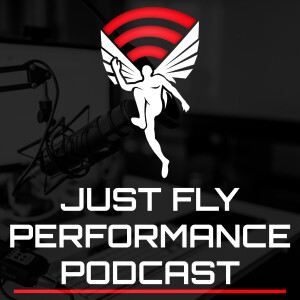
215: Chris Korfist on New Advances in Sprint Training and Mind-Body Concepts in Athletics | Sponsored by SimpliFaster
 2020-08-13
2020-08-13
Download
Right click and do "save link as"
Today’s episode features speed coach and human performance expert, Chris Korfist. Chris is a multi-time guest on the podcast and is back for a solo-interview show where he gets into his recent developments in speed training, as well as a great conversation about mind-body concepts and their relationship to sport, and even life itself.
Chris Korfist has been a high school coach in track and football for almost 30 years, with more than 80 All-State athletes. He owns the “Slow Guy Speed School” that helps develop athletes ranging from World Champion to middle school. He has consulted with professional sports teams all over the world, including the NFL, MLB, NBA, and Rugby League, and is an advisor for Auckland University of Technology’s SPRINZ. Chris also co-owns the Track Football Consortium, and co-founded Reflexive Performance Reset.
It is always good to sit down and just have a great sprinting/speed conversation, as in so many ways, speed is a universal concept to us as human beings, regardless of our exact sport or movement practice. Sprinting represents the highest coordination demand output that the human body can do, and improvements in maximal sprint velocity are some of the hardest earned in training, but also some of the most rewarding. Chris has been on several of my podcasts in the last few years, but we haven’t had a true “speed training” talk since our first episode together around 4 years ago.
In addition to some great novel concepts on speed training covered on this show (such as asymmetrical sprint training and shin-drop methods), Chris also gets into a topic that may be more powerful and relevant for many athletes than particular speed training methods (although we want to do them all well), which is the power of the mind to impact posture, power outputs, sport skill, and attitudes of the opposing team. If you get all of the speed training right, but get posture and confidence wrong, one’s highest potential will never be reached.
Today’s episode is brought to you by SimpliFaster, supplier of high-end athletic development tools, such as the Freelap timing system, kBox, Sprint 1080, and more.
View more podcast episodes at the podcast homepage.
Timestamps and Main Points
13:35 Updates and new ideas in Chris’s sprint program the last several years
26:05 Foot training, and how subtle variability can make a big impact on exercise outputs and effects
32:05 Using resisted sprint training to help technical elements, such as shin drop
40:25 Why Chris changed over from straight-leg bounding/primetimes into preferring flexed-leg bounding/flexed-leg primetimes
43:45 Mind-Body Training: The story behind saying “I am the Greatest!” before doing a sprint or jump, etc. and improving performance substantially
55:05 Mirroring in athletic performance
“I think in the (bent-knee primetime) position, it is going to be more appropriate to changing the lever, loading the ankle, and getting a more realistic toe-position (than a straight-leg primetime)”
“Where you walk on your knees and you try to crush your calf to your hamstring… that’s a great exercise (for sprinting)… We wear the LILA calf sleeves when we do those to bring the focus on picking the shin up”
“It’s a monster of a workout, when you just put weights on one (LILA) sleeve… you can put it on the same arm, same leg, and now it’s a huge core challenge”
“If I’m slowing down one leg, the other leg has to go faster”
“Kids would run faster fly 10’s when we put the (LILA) sleeve on one side”
“Change your toe position and do the (lateral line hop) and it’s a completely different exercise. The slightest variation in your limbs completely change what the exercise is. You are changing slack, distances, recruitment patterns, fascial patterns, and all that”
“I started pulling kids out of the start. So I am focusing on, do I have time to get that shin down if that’s really what I’m focusing on”
view more
More Episodes
012345678910111213141516171819
Create your
podcast in
minutes
- Full-featured podcast site
- Unlimited storage and bandwidth
- Comprehensive podcast stats
- Distribute to Apple Podcasts, Spotify, and more
- Make money with your podcast
It is Free
- Privacy Policy
- Cookie Policy
- Terms of Use
- Consent Preferences
- Copyright © 2015-2024 Podbean.com





